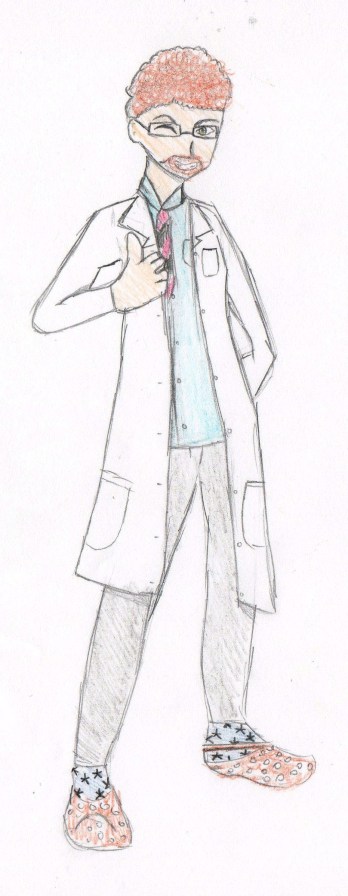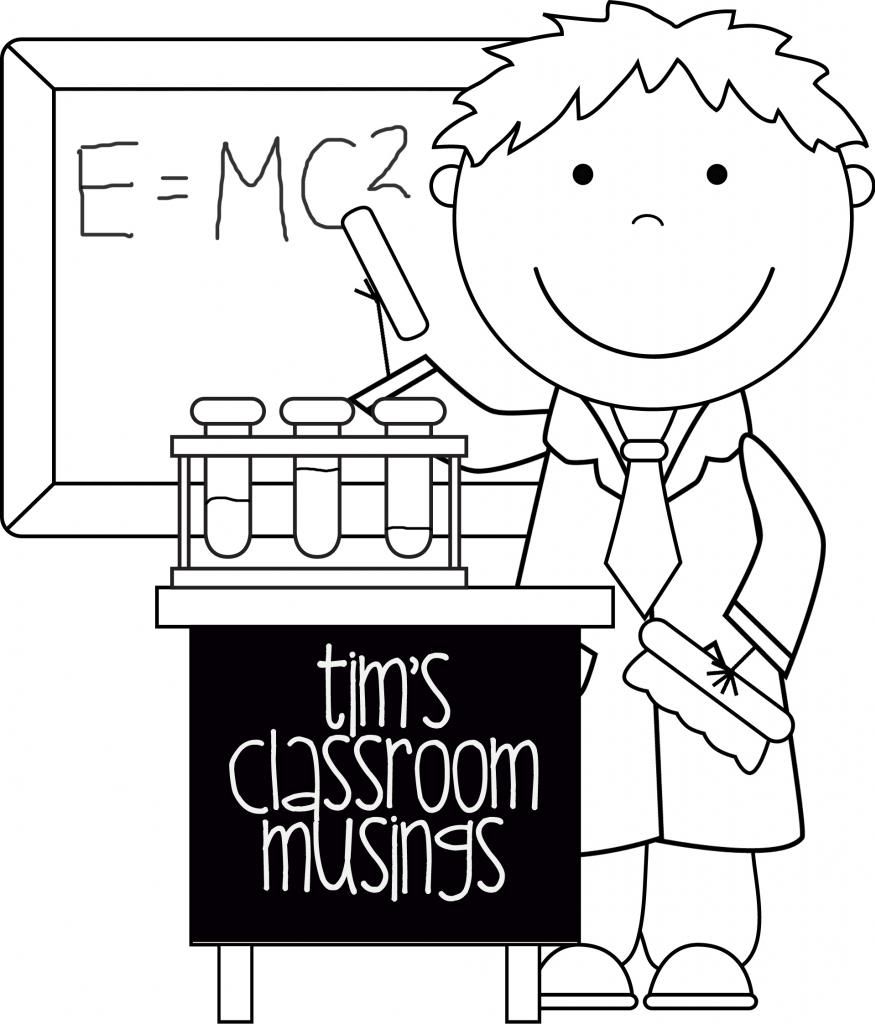OK people, it is time for me to put on my Don Quixote suit so get ready for my soapbox.
Science is important! I need you to hear me now School District People, Politicians, Law Makers, and General Public members! Science is important. It is not, repeat not, the land of nerds who have no social life and less chance of getting a date than Donald Trump. No, science is often the one subject in school that will ignite the passion of learning in kids. Science is the subject that will allow that one kid in your room, you know who he is, who struggles with everything to be successful. Why then is it so seldom taught in elementary schools? Fear!

This is from a former student Emma. I asked her to draw a picture of me. Notice the Crocs, funky socks, & lab coat! She nailed it! Great work, Emma!!!
Teachers are afraid of science for a lot of reasons. The subject matter is foreign, the lessons have a lot of materials which you may or may not have, and there is often a lot of chaotic noise involved. The instruction that teachers received in their teacher ed programs is often substandard, and focused on activities instead of thinking, exploring, and making connections. So the result is that when science is taught it is often seen as nothing more than just an activity (magnets stick together! WOW!) or even worse, as a dreadful reading assignment in an outdated textbook.
I am here to tell you that Science is important, it is critical really, and that it is within your grasp (can I get an AMEN here???).
Science in the classroom can be as simple or as complex as you want to make it but it is not out of your reach. So what makes a great science lesson instead of a lame one? One word. . . thinking!
As a teacher, you already ask your kids to think deeply about their reading and their writing. You encourage them to go beyond mere retell when it comes to their novel and instead think about why the author does things the way that they do… science is no different. So, instead of giving students a worksheet to fill out, give them the materials and let them explore. While they are exploring, ask them what they are thinking. Don’t be afraid to not know the answer… to not understand everything that is happening is okay. True science lies in the margins, the areas where things are not black or white, but are grey. And grey can be uncomfortable but I believe that the grey is where true learning occurs.
Now I know that sounds a lot easier than it really is and that you already have too many things to do in your day, too many requirements and too little time. But in science we are able to show kids that they have the power to learn complex concepts and that it is OK to be confused at times. I believe that the most powerful component of science lessons is in the fact that children want to do it already. We don’t need to fight them to get them engaged. Students beg for activity and exploration. All we need to do is allow them freedom to explore and wonder. If we can get out of their way and let them go, they will make sense of the grey areas. Isn’t that what it is really about? So go ahead, ask them if a coat will make a snowman melt faster (hint… a jacket acts as an insulator and slows down the melting). Go ahead, ask them what happens when you leave a cup of water out (evaporation) or throw a chunk of dry ice into a zip top bag (the dry ice supplemates and causes the bag to expand). Most importantly, be an example of learning for your students. And remember, Science is Important!
OK, now I will get off my soapbox and put away my lance. The windmills will still be there tomorrow!




Leave a comment